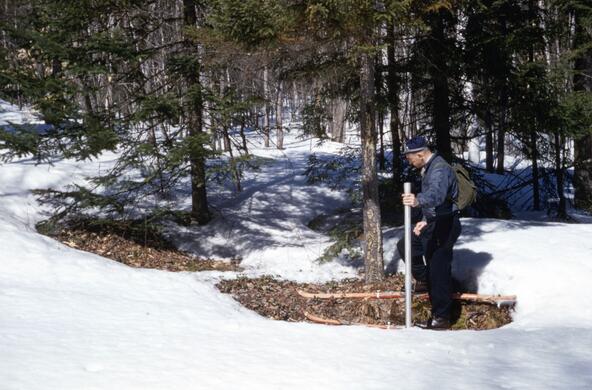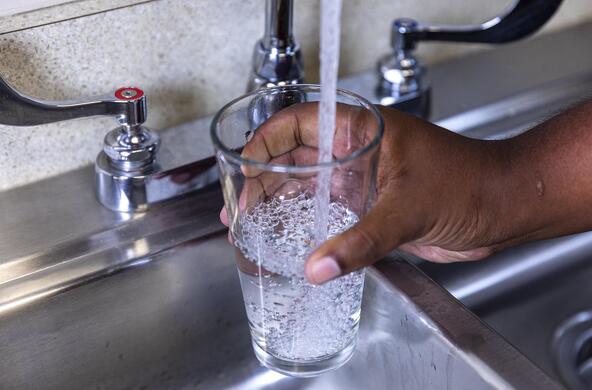Few of us get our water from a clean mountain brook.
Next time you fill a glass of water from the tap, you should realize that just a few days or weeks ago, it may have been water that carried sewage from someone’s toilet. About half of the drinking water intakes in the U.S. are supplied by treated wastewater upstream, diluted with natural streamflow. Ideally, the water was treated at a local sewage-treatment plant to remove particles, nitrogen, phosphorus, and bacteria, and returned to a local stream to continue its journey to the sea. What is not removed should concern us.
In a recent study in the journal Nature Geoscience, Jacelyn Rice and Paul Westerhoff measured the concentrations of specific chemicals, known only from human origin, in natural waters. They found that in 6 percent of streams across the U.S., more than half of the water had passed through at least one cycle of use and treatment by human activities. We are often drinking from the wastewater of those who live upstream, and we can only hope that it is safe.
Now, on one hand, I am glad to hear that humans are so good at recycling water. Otherwise our burgeoning population would put even more pressure on limited supplies of water, particularly in arid regions. On the other hand, with so much dependence on recycled water, it gives me pause to see proposals now before government agencies to relax the standards for discharge and stream protection across the U.S. (See: Waters of the United States).
With their focus on endocrine disruptors—artificial chemicals in water that mimic our own hormones—Rice and Westerhoff’s study also gives me pause to think about what we don’t regularly remove from sewage waters before they are discharged to the environment. Earlier work by the EPA found endocrine disrupting chemicals in 98 percent of publicly treated wastewater. Sewage treatment plants were not designed to remove pharmaceutical residues, plasticizers, insecticides, herbicides, and other products that we have introduced into natural waters in the pursuit of “better living through chemistry.” Many of these compounds are carcinogenic at low concentrations. And, some of the highest concentrations of these compounds are found in small low-flow streams that the current EPA administrator wants to exempt from the Clean Water Rule. (See: Your water on drugs).
Ideally, we should be enhancing water-quality standards, not weakening them.
References
Doyle, M. W. and E.S. Bernhardt. 2011. What is a stream? Environmental Science and Technology 45: 354-359.
Rice, J. and P. Westerhoff. 2015. Spatial and temporal variation in de facto waterwater reuse in drinking water systems across the USA. Environmental Science and Technology 49: 982-989.
Rice, J. and P. Westerhoff. 2017. High levels of endrocrine pollutants in US streams during low flow due to insufficient wastewater dilution. Nature Geoscience doi: 10.1038/NGEO02984
Rosi-Marshall, E.J., D. Snow, S.L. Bartelt-Hunt, A. Paspalol, and J.L. Tank. 2015. A review of ecological effects and environmental fate of illicit drugs in aquatic ecosystems. Journal of Hazardous Materials 282:18-26.







